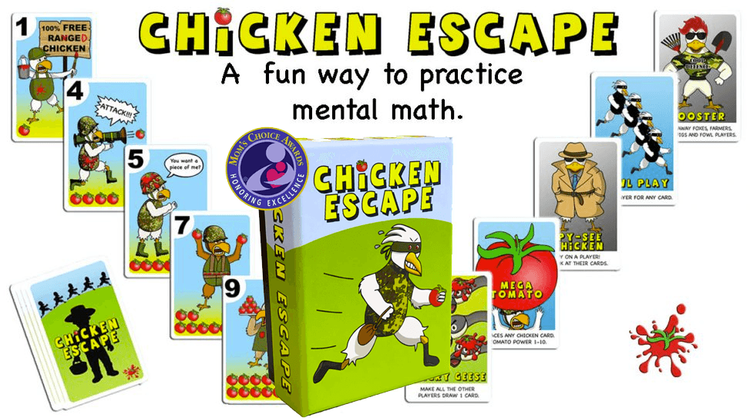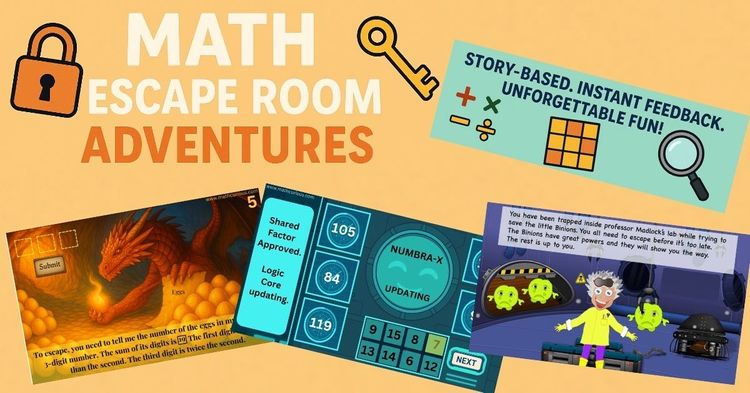The connection of binary number system to computers makes it a very interesting concept for students. The binary number system helps to store information of all kinds on computers. Computers use binary digits (or bits) because they can only read and store an on or off charge. So, using 0 as “off” and 1 as “on,” we can use numbers in electrical wiring. With just two number-symbols, you can count quite high using things that just go “on” or “off”, “yes” or “no”.
Teaching students a different number system than ours will show them that place value is not limited to base-ten and that there is a difference between numbers and numerals. I recommend introducing binary numbers after teaching the powers of two.
In our decimal number system, we can write the numbers 0-9 using only one digit. However, to write number 10 we need a tens place. In the binary system, there are only 2 digits. o and 1. So we can only write the numbers 0 and 1 with one digit. To write the number 2 we need a new place, a two’s place.
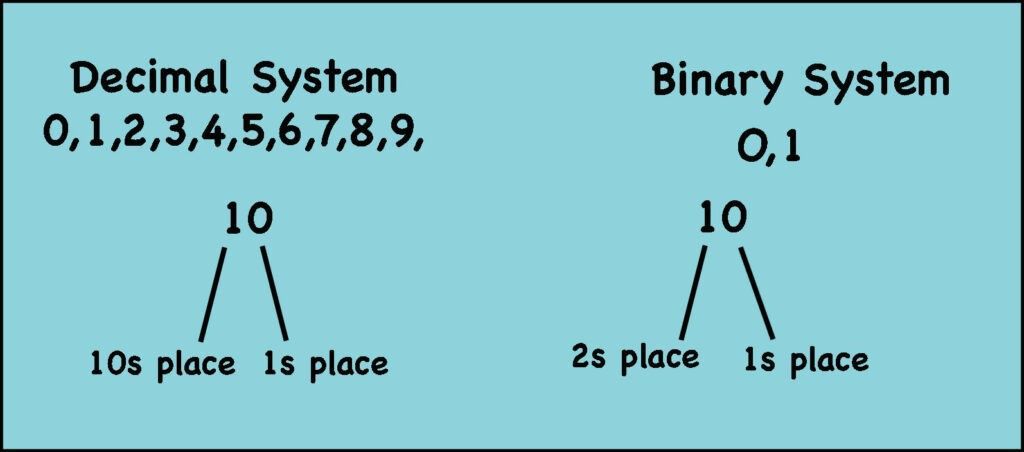
In our base-ten system, this will represent 10. In the binary system (base-two system) the one is in the two’s place. 2+0=2 So in the binary system, this is number 2. The one’s place is 0 (off), which means there are no 1s.

How will we write number 3 in the binary system? We can write one in the one’s place, and one at the two’s place. 2+1=3

To write number 4 in the binary system we need a new place, a four’s place. We write one in the four’s place, zero in the two’s place and zero in the one’s place. 4+0+0=4 The 2s and 1s place are off. There are no 2s or 1s.
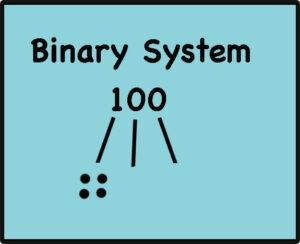
In our decimal (base 10) system we have ones, tens, hundreds and so on. The place values are powers of 10. In the binary system, two is the base for each place value since we can only use two digits. 0 and 1. So the place values are powers of two.
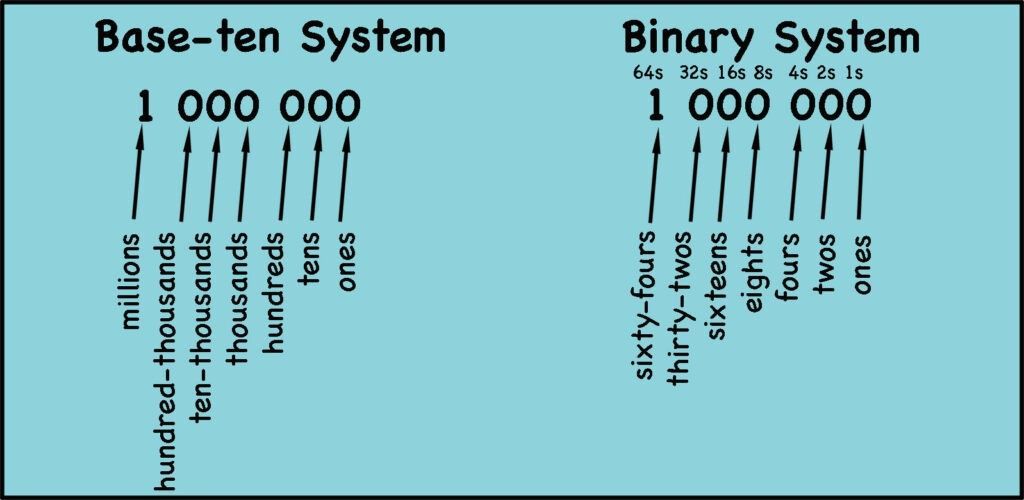

Let’s write the numbers 1-20 using the binary system and see if we can find patterns and make observations.
- The biggest number we can write with just two digits is number 3.
- The biggest number we can write with 3 digits is number 7.
- 100 is number 4 in binary.
- 1000 is number 8.
- 10 000 is number 16.
- 100 000 is number 32
- 1 000 000 is number 64.
- The even numbers have o (off) at the one’s place.

Let’s try a few more examples. Let’s convert these binary numbers to numbers in the decimal system.

Now let’s try the opposite. Converting a base-10 number to a binary number.
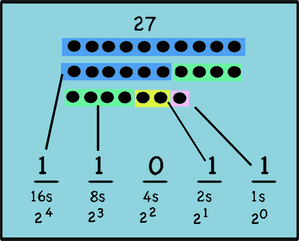
The largest power of two that is less than 27 is 2 to the power of 4 =16 so we have one 16. Then from the remaining the largest power of 2 is 2 to the power 3 =8. So we have one 8. We have 0 4s, and the remaining is 2 to the power of 1=2 and 2 to the power of o=1
Here are some activities to try with your students.
- Ask a group of students to stand up holding cards with 1 or 0 on one side and 64, 32, 16, 8 4, 2, 1 on the other side. They have to find the correct way to stand in a line without showing their powers of two place values sides of the paper to the rest of the class. Then the other students work out the number they formed.


- Ask your students to write the largest binary number with 3 digits, 5 digits and so on. The smallest binary number with 3 digits, 4 digits and so on.
- Challenge your students to form numbers in different number systems like a base 5 system. A base 5 system will work with powers of 5.
Here are some worksheets for Binary Numbers to try with your students.
I hope you find our suggestions useful. Let us know what other methods and activities you use to teach about binary numbers.

